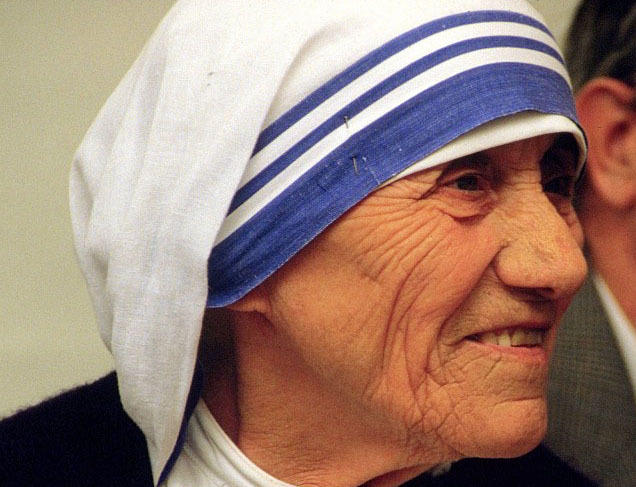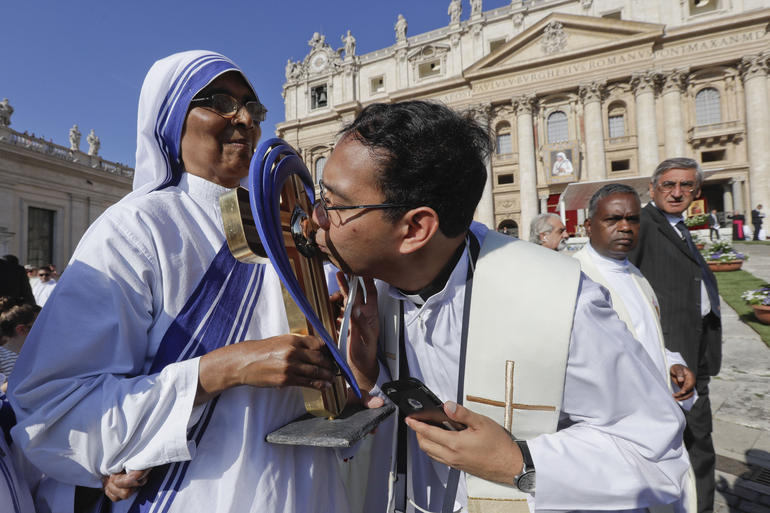The design of the sari, which Teresa is believed to have purchased from a Kolkata market, is now the exclusive intellectual property of the Missionaries of Charity.
Biswajit Sarkar, a lawyer from the order she founded nearly 70 years ago, said he would take "severe" legal action against unauthorised use of the design to combat "misuse" of the saint's reputation, often for commercial gain.
He told the Guardian he had applied for the trademark in 2013 and, while it was formally granted in 2016, it was only recently publicised. He also had the name "Mother Teresa" trademarked.
No exceptions for the use of the trademarked sari's design or name will be made for charitable enterprises or other religious orders.
Sarkar said: "There are many organisations starting schools naming themselves after Mother Teresa, and wearing the uniform, where the Missionaries of Charity have no connection."
He explained some teachers at schools named after the saint had been writing to the Missionaries of Charity complaining about late salary payments, unaware their schools were separate entities.
Sarkar also claimed other organisations and religious books published with the blue-striped trimming gave the impression the Kolkata-based order had endorsed them.
Some nuns have questioned the trademark but Sarkar said it's important to clamp down on the unauthorised use of the pattern.
He added: "Even the nuns were asking me, 'if the people are not using it for commercial gains, should we stop them'?
"But whether it is for commercial gain or not is not the issue. We are thinking about our identity. If the blue pattern, which is unique in the world, is diluted or used by the public, then one fine morning the organisation will lose their identity."
This is the first time a religious uniform has been trademarked anywhere in the world.
Born on 26th August 1910 to Albanian parents in Skopje, Mother Teresa came to India in 1929 as a sister of the Loreto order. In 1946, she received what she described as a "call within a call" to found a new order dedicated to caring for the most unloved and unwanted, the "poorest of the poor".
In 1950, she founded the Missionaries of Charity, which went on to become a global order of nuns - identified by their trademark blue-trimmed saris, as well as priests, brothers and lay co-workers.
She was awarded the Nobel Peace Prize in 1979.
She died in 1997 after a lifetime spent caring for hundreds of thousands of destitute and homeless poor in Kolkata, for which she came to be called the "saint of the gutters".
St John Paul II, her most ardent supporter, fast-tracked her for sainthood and beatified her before a crowd of 300,000 in 2003. She was declared a saint in 2016.






